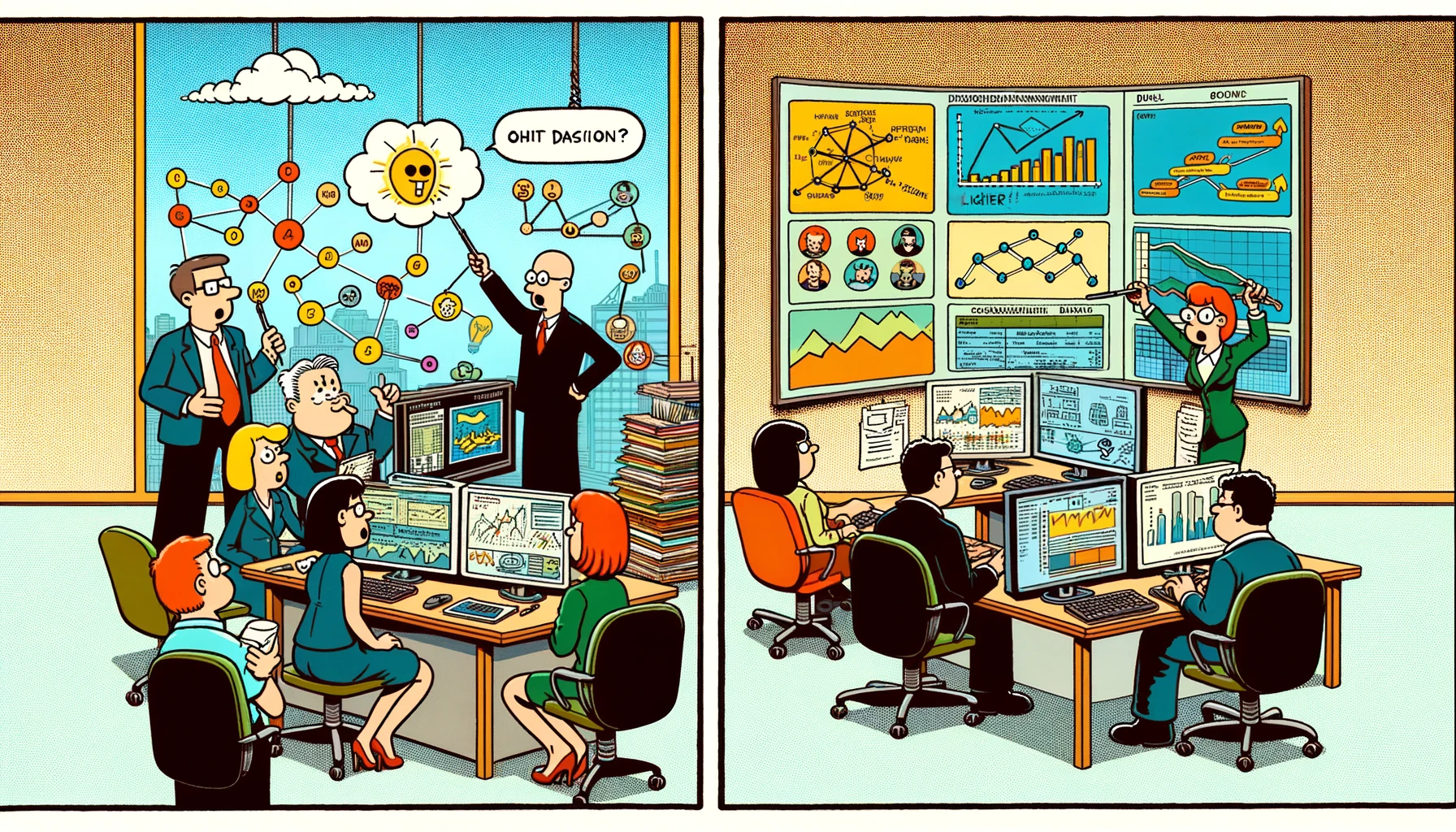
Blog post
The Crucial Role of Performance Management: Why CEOs Should Focus on it Now More Than Ever
CEOs have a lot on their plates. Learn why performance management could be the best way to protect and grow your business.

The Crucial Role of Performance Management: Why CEOs Should Focus on It Now More Than Ever
In today's business world, CEO is a complex and demanding job. We face economic uncertainty. We face fierce competition. We need to promote innovation. Smart CEOs know top talent is the key to future success. Better performance management is the key to better talent results. This blog will explain why it's important.
Navigating Economic Uncertainty: Identifying Top and Bottom Performers
Economic downturns are inevitable. In a recession, CEOs have to make tough decisions, including layoffs. Wouldn't you rather make informed choices about who to let go?
Top performers make a major impact on company performance. The better you are at identifying them, the easier they are to keep.
Performance management helps you identify employees who are not performing well. During a downturn, it is crucial to find areas where costs can be reduced. We must ensure that these measures do not harm our core business operations. CEOs can use accurate employee performance data to inform whom to let go.
Beyond Traditional Performance Management: Identifying Hidden Gems
Traditional performance management processes rely on annual or biannual reviews. But, these processes have faced criticism for their limitations. Traditional methods often fail to identify true top performers. We all know managers' opinions are subjective. But we let them decide who is a top performer and who isn't.
Performance management is changing to fix these problems. The process focuses on giving feedback and regular check-ins. It also utilizes data-driven approaches instead of subjective opinion. Better data helps executives get a more accurate picture of their workforce.
Modern tools like Organizational Network Analysis (ONA) can find hidden gems among employees. These employees may not get noticed through traditional assessments. However, they always achieve exceptional results. To succeed in business, it is crucial to identify and nurture your top performers.
The Cost of Toxic Employees
Toxic employees can cause a lot of problems for a company. They can harm the company's culture, morale, and productivity. If you create a hostile work environment, it will lead to lower job satisfaction. Higher turnover rates occur as a result. Bad employees can cost companies more than their pay. In the long run, their presence has a big impact.
Performance management is crucial for recognizing and dealing with toxic behavior. A quick response will stop toxic employees from causing harm.
Fostering Innovation and Dynamism
Innovation is the lifeblood of any successful organization. Companies can become obsolete if they do not adapt and innovate. Business moves faster than ever. A culture that values top employees supports new ideas and energy.
Performance management helps you find future innovators at your company. These employees bring positive change. Recognizing and rewarding these people create a culture of innovation. It inspires others to excel grow the company.
Winning the War for Talent: Retaining Top Performers
The competition for the best employees is intense. It is crucial to keep them. Retaining top performers can be challenging if you don't know who they are. Bad performance management often overlooks top talent. Over time, these employees will leave.
Performance management is a source of important information. Use this knowledge to customize retention strategies.
Ensuring Alignment with Organizational Goals
Effective performance management helps managers and employees support company-wide goals. This process helps goals spread throughout the organization. This alignment increases the chance of reaching strategic milestones. Everyone works together for a shared goal.
Data-driven Decision-Making
CEOs in today's data-driven world need accurate, up-to-date information. They rely on it to make informed decisions. This includes workforce planning and resource allocation, driving the organization forward.
Employee Development and Engagement
Employees are a company's most valuable asset. Performance management goes beyond assessing performance. It should pave the way to growth. CEOs focus on performance management. They invest in their workforce's growth. This leads to engaged and motivated employees. Employees who are engaged are more likely to remain with the company. This also helps to decrease turnover costs.
Leveraging Organizational Network Analysis (ONA) for Fair and Accurate Performance Management
Traditional performance evaluation methods are often criticized for subjectivity and bias. Biases can easily creep into these methods. However, in today's data-driven world, there's a more sophisticated and equitable way to identify top performers: Organizational Network Analysis (ONA).
ONA is an advanced method that uses data analytics. IIt maps and analyzes how employees interact, connect, and relate to each other. ONA helps you understand work and the main factors that influence it.
Here's why ONA is one of the best ways to identify top and bottom performers fairly and accurately:
Objective Data-Driven Insights:
ONA relies on objective data rather than subjective judgments. Traditional performance evaluations have bias and favoritism. ONA provides a clear, data-driven picture of value drivers. It is not based only on manager opinions.
Identifying Informal Leaders:
Official titles don't always tell the story. Many of your most important employees are working behind the scenes to get things done. ONA helps identify informal leaders. These leaders may not have senior titles. But they have a lot of influence in their teams or throughout the organization. Identifying these influencers is important for better talent decisions.
Inclusion and Diversity Considerations:
ONA considers the various contributions employees make, regardless of their background. This fosters a fairer and more inclusive workplace.
Targeted Development and Support:
CEOs and HR leaders can use ONA insights to provide targeted development and support. Customize training to address gaps and enhance employee strengths.
Performance Improvement Initiatives:
ONA shows where there are bottlenecks, breakdowns in communication, or gaps in collaboration. CEOs can use this information. They can design and install initiatives. These initiatives will improve performance, team dynamics, and efficiency.
Accurate Succession Planning:
CEOs need to know who their future leaders are. ONA is better at identifying influencers and high performers than traditional methods.
CEOs in the business world face new challenges. But, performance management is a powerful tool. It makes it easier to keep the best talent and exit underperformers.
Organizational Network Analysis (ONA) makes performance management fair and accurate. ONA shows how employees contribute, lead, and work together. CEOs who follow this path will make their organizations stronger.
Latest posts

Ready to see Confirm in Action?
See why forward-thinking enterprises use Confirm to make fairer, faster talent decisions and build high-performing teams.








